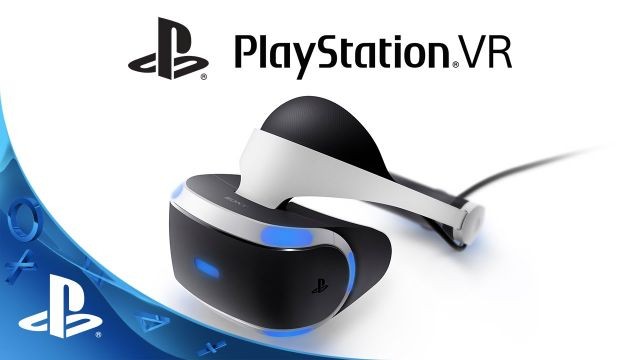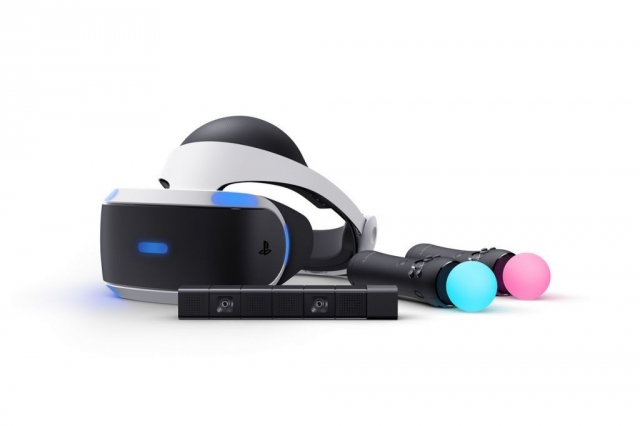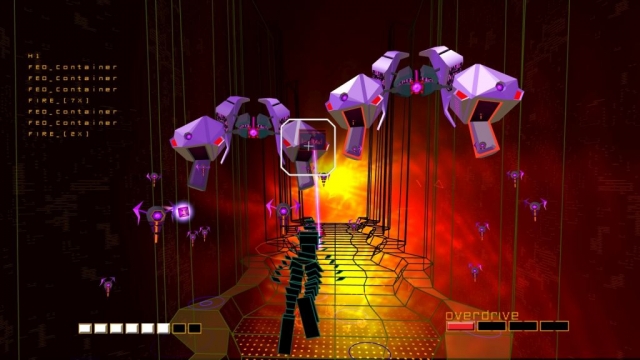PlayStation VR

PlayStation VR has hit the gaming world by storm and is one of the biggest game-changers of the generation. Virtual reality has been the stuff of gaming legend for over 20 years, and now it’s available at a very consumer-friendly price point of $400, which gets you the VR headset, the HDMI processor box, an HDMI cable alongside all other connections, a demo disc, and ear buds. Some will probably expect full-fledged headphones to be included, and with Sony having so many kinds available both for gaming and non-gaming purposes, that’s a valid complaint.
Setting up the device is time-consuming, but easy. There are a lot of steps to the process, but every cable you need to hook up that comes with the device is clearly labeled. The various cables are easy to keep track of as a result, and outside of the HDMI cable you would usually use for the PS4, every cable is labeled and easy to hook up. The HDMI processor box itself adds some bulk to your setup, but can easily be set on its side next to the PS4 – which is how I have mine set up. This allows everything to be somewhat neat and tidy, but still practical.
The headset itself is the largest part of the package and is the most comfortable headset I’ve tried between that and the Oculus Rift. The Rift headset is larger, but its included headphones aren’t quite as comfy as either using your own headphones for the PSVR or using the ear buds. The buds themselves fit in snugly and provide a surprisingly immersive audio experience. With your eyes covered up by the headset and your ears being encompassed by either the buds or headphones, you can get a nice sensory deprivation experience here that allows you to fully focus on the game.
You can still listen to the game with your TV speakers or home theater setup if you prefer. I have found that to be quite useful if I had something else going on and just played casually, so I could just pause the game, get on with things, and then resume the play session later. It’s a wise idea to keep a couple of things near you and lay them out carefully. Keep your Move controllers and DualShock 4 close by along with the included microfiber cloth. This will allow you to clean the lenses in the VR unit – which you’ll want to do after a play session, especially if you’re using it with glasses on.
Owners of the PS3’s Move controllers will want to search Rubbermaid bins in the basement for them – because they work well here. Fortunately, most games are made to also support the DualShock 4 – but the Move controllers do work well in games like Batman: Arkham VR to have each controller control one of your hands. It’s a bit like the Rift’s Touch controller idea – only with neon-lit ice cream scoops at the top of the controller. DualShock 4 support works nicely for most games and I actually found Arkham VR to be better as a game with the DS4, but better as a pure experience with the Move controllers – even though the latter could be a bit quirky to figure out what you had to do to get things done.
The early release lineup is incredibly diverse and gives you a wide range of gaming options. Racing fans have Driveclub VR to enjoy. While it doesn’t have as much content as the full-fledged Driveclub game, what’s here is fantastic. Being able to look out the car windows by just moving your head is immersive and I found myself losing a few races and having fun doing so just because I was amazed at the experience.
RIGS: Mechanized Combat League is easily the shining star of the lineup in terms of quality and gameplay diversity. While everything in it revolves around shooting, I’ve never played a console FPS with controls as sharp as this one. Using your own head movements instead of a right stick feels incredibly natural and gives you 1:1 response on par with a mouse – but far more intuitive. The sports league setup is great for an all-ages shooting game since there’s no major violence, and the season setup ensures that every gameplay session has some variety in it. The regular team deathmatch, American football-style mode, and pseudo-basketball modes where you are essentially the basketball are all excellent – and the experience is even better offline.
Shooting fans have the most options of the bunch right now, with EVE: Valkyrie, Battlezone, Call of Duty: Infinite Warfare – The Jackal Assault VR Experience, World War Toons (in beta), RIGS, Until Dawn: Rush of Blood, and Pixel Gear to enjoy. Each uses either the controller or, in the case of Pixel Gear, the Move controllers to provide a more visceral shooting experience. Being in the VR space means that aiming with the Move controller in Pixel Gear is enhanced by actually looking around and getting that perfect angle for a headshot in a way that you simply can’t do in a non-VR game. Its wave-based nature keeps you coming back for more, and its boss battles are simply epic.
Rez Infinite is another huge highlight. Rez itself was a sleeper hit in Japan on the Dreamcast and then became one in North America on the PS2. The Xbox 360’s XBLA release of Rez HD expanded its audience greatly, while Rez Infinite gives you everything Rez HD had plus so much more. An all-new stage called Area X is unlockable and the entire experience is playable either in or out of VR. It’s amazing to experience this game retro-fitted with VR because it feels like it was made for it from the beginning. With Area X, it truly is one of the best experiences on the device so far.
The shooting action is more frantic and there are much larger set pieces that throw impressive-looking things at you so you can approach them from different angles. The game itself is more user-friendly than ever before thanks to a casual-friendly mode that nixes game overs and makes Area X a breeze to access by only requiring you to either beat the game or just play for an hour – which you can do easily by just playing the main game in non-game over mode in and out of VR. It’s a great value for $30 and a must-have for anyone who loved Rez before – or who hasn’t, but loves rail shooters.
Adventure fans really just have Batman: Arkham VR to enjoy – and that’s just fine for now. “Being Batman” is the whole point of the game, and it does find a way to mix in combat, action, and a ton of detective work. The latter was probably the least-enjoyable part of the Arkham games – but here, it’s far better because of how interactive it is. You scan video frame by frame and from different angles, while investigations benefit a lot from actually moving your Move controller over items or people bit by bit to analyze them. It sucks you in – so even though it’s a short experience, it’s a very good one.
PlayStation VR changes the game for Sony and brings virtual reality to the masses. At $400, it’s the least-expensive option for VR and has the biggest game library to boot. Those with VR-ready PCs will have a better-looking VR experience – at least until the PS4 Pro comes out, and even then, it could still be better to use a Rift or a Vive graphically. The PSVR is greatly aided by being made as a gaming device first and foremost, and exclusives like RIGS and Driveclub VR do make it worth owning even if you already have a Rift or Vive. Many stores will be doing demos through the end of the year – so definitely try it out. Motion sickness issues can crop up, and while I’ve had no issues, I also wouldn’t recommend buying it without trying out VR technology first. It’s exciting stuff and truly does bring the dreams of early ’90s technology buffs into reality – it just took a while to get there, but the wait was worth it.
Reviewed By: Jeremy Peeples
Developer: Sony Interactive Entertainment
——————————————————————————–
This review is based on a PlayStation VR unit purchased by the reviewer.
 Game Over Online
Game Over Online





